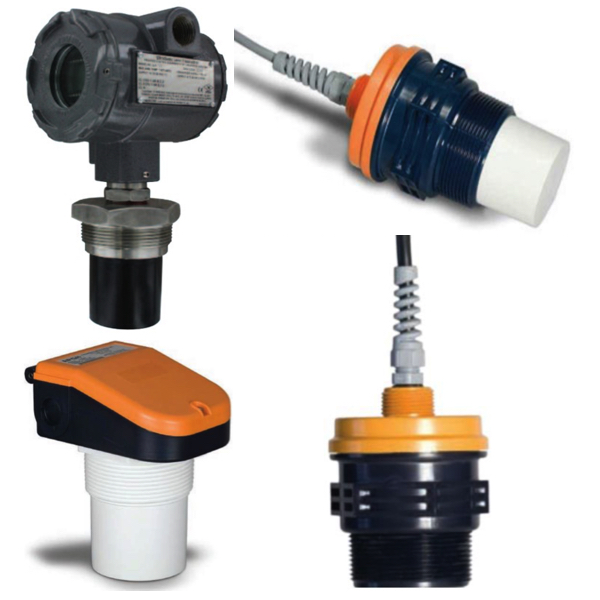Ultrasonic Level Transmitters

Ultrasonic level transmitters utilize ultrasonic level sensors to impart reliable and accurate level measurement in a wide range of applications. These transmitters work by emitting ultrasonic pulses toward a liquid surface or solid material, and the reflected sound wave is analyzed to calculate the distance between the sensor and the material. This non-contact measurement method minimizes the risk of contamination or any other effect that might interfere with the measurement signal. Ultrasonic level transmitters are a price-conscious and technology-conscious solution for continuous level measurement.
Commonly used in object detection and level monitoring, ultrasonic level transmitters are particularly well-suited for application in open channels, tanks, and reservoirs where level measurement is required. Their ability to non-invasively detect liquid levels makes them just right for corrosive or heavily polluted environments. Accuracy is really what makes these devices shine. The level measurement is always directly proportional to the amount of time it takes for the ultrasonic sound wave to make its way to the object's surface and back. These devices are also quite versatile and, in many cases, can be tailored to the individual specification of the application. Outputs and signals can often be configured to the user's needs, which is a plus in manufacturing or processing work where different machines talk to and control one another.
More Information about Ultrasonic Level Sensors
Besides being accurate and versatile, ultrasonic level transmitters are durable and easy to install. The performance of an ultrasonic level transmitter primarily depends on the transducer and the signal it emits. An ultrasonic level transmitter uses sound waves to measure a distance. It continuously emits sound waves and measures the time it takes for the sound waves to return after hitting the surface of the material it is measuring. This return signal is used to calculate the distance from the transmitter to the surface (a.k.a. level). The sound waves are emitted in a conical pattern, which gives a large area of the surface from which the signal could return. The angle at which the sound waves are emitted determines the cone-shaped area into which the sound waves will travel.
FAQs
Is an ultrasonic sensor a cost effective solution for object detection?
Yes, ultrasonic sensors are a cost-effective solution for object detection due to their reliability, accuracy, and ability to function in various environmental conditions without requiring direct contact.
Can ultrasonic level sensors be used to calculate the volume measurement of bulk solids?
Yes, ultrasonic level sensors can be used to calculate the volume measurement of bulk solids by measuring the distance between the sensor and the material's surface and using the dimensions of the storage container to determine the volume.
Transmitters vs Transducers
Some of the most common types of transmitters and transducers can be found on pressure instruments. Examples of these include: drop-in well pressure devices and devices that measure the pressure in a pipe or gas chamber. Transmitters and transducers can also be found on flow and speed measurement devices.
What is the difference between transmitters and transducers?
The main difference is the way they send data to the monitoring device, like a PLC. In terms of measurement, the transmitter will reference a measuring unit by sending a milliamp signal (such as 4-20 mA). A transducer will reference a measuring unit by sending a voltage signal, typically in volts or millivolts.
Why have the two different types of transmission methods?
The method will depend on the application. If the electrical connection in the application travels a short distance, a pressure transducer is the better choice. Pressure transducers are smaller with fewer active electronic components that can be upset by electromagnetic interference. Also, the voltage signals transmitted over longer distances are subject to voltage drop and signal corruption. A transmitter is better for transmitting signals over a long distance.

